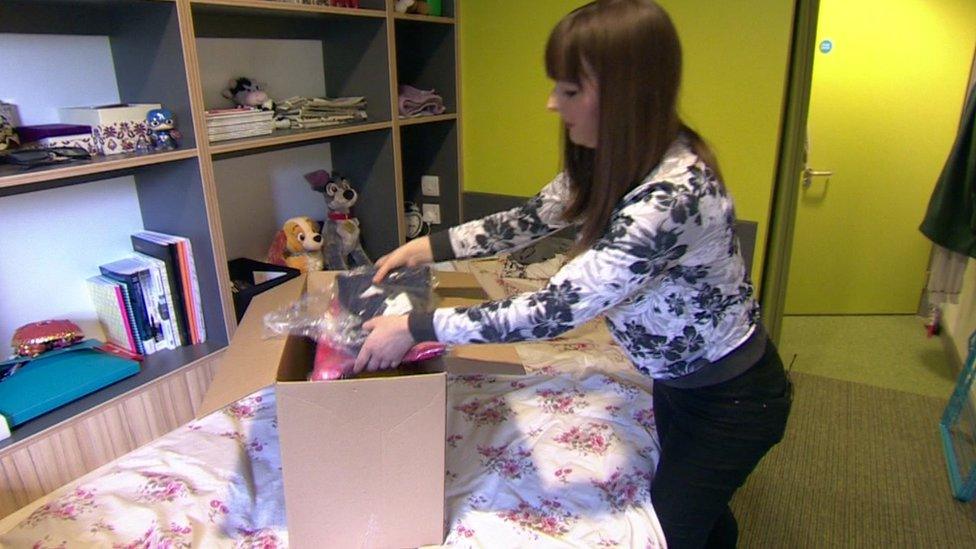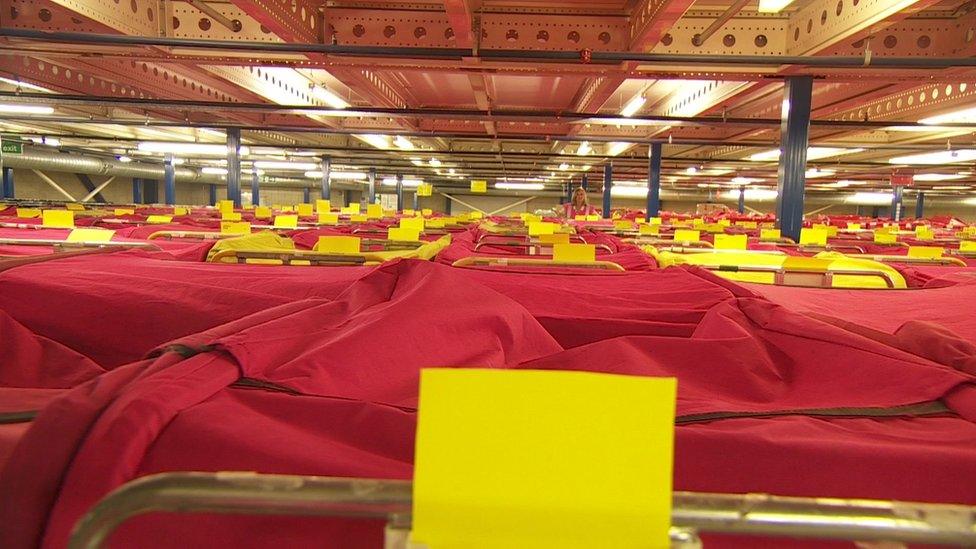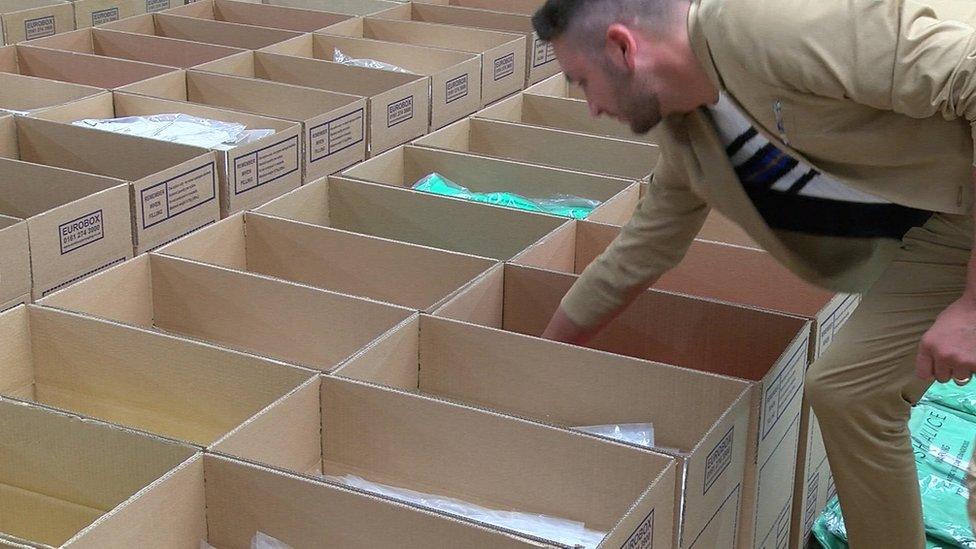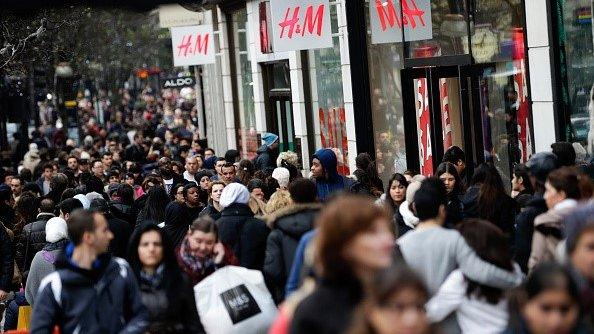Most online clothes shoppers send something back
- Published

Variations in retailers' clothing sizes means Emily Murray buys in four different fits - so lots get returned
New figures suggest almost two thirds of shoppers who bought women's clothes online in the last six months sent at least one item back.
So-called "serial returners" are blamed for pushing up prices.
Researchers who questioned over 1,000 online shoppers found women's clothing had been returned by 63% of them.
Retailers said free returns were an important part of their business but the costs had to be recovered somewhere or they risked going under.
Consumer analysts, Savvy Marketing compiled the figures for BBC Radio 4's "You and Yours" programme.
It found 56% of all people questioned, who bought any type of clothing online in the six months up to May 2016, had sent one or more items back.
The figure was higher for women's clothes.
Smartphone revolution
The research also suggested that people aged 18-24 were twice as likely as their parents to do internet shopping using their smartphones.

This one distribution centre received 80,000 returned items of clothing on the day of filming
Catherine Shuttleworth, from Savvy Marketing, said: "The Smartphone revolution has made shopping ever nearer - it is right next to our purse or our wallet.
"That immediacy and ability to buy things whenever you want is really important to that generation."
Student Emily Murray is one of this new generation of shoppers.
She said she bought a lot online, especially for occasions when she did not want pictures of herself "popping up repeatedly in the same dress on Facebook".
She said it was "near impossible" to know which would fit her, so she ordered different sizes.
"I end up sending back pretty much half of what I buy and it might even be more," she said.
Forty football pitches
Many of the returns are passed onto logistics firms around the country that handle returned goods for major retailers.
Tony Mannix, CEO of Clipper, said that the brands he worked with did not want to be associated with the vast quantities of returns he handled at any one time - enough to cover "forty premier league football pitches".
You and Yours reporter Samantha Fenwick - who visited one of Clipper's plants at a secret Yorkshire location - said some of the clothes did not come back in peak condition.
She described lipstick stains and other clear signs that they had been worn.
Sniff test
Mr Mannix said about 5% ended up "being binned".
"The first check we do is what's called the sniff test because new clothes smell like new clothes," he said as he described the checks they use to see if a garment had been washed or worn.
Such wastage can be a big problem for retailers.
Recent research from Barclaycard suggested that one in five online businesses had increased prices to cover the cost of managing and processing customer returns.
By law, retailers had to offer customers the option of returning goods bought online within 14 days.
Once shoppers had informed the retailer they then had another 14 days to return the goods and must be refunded within 14 days of the retailer getting the goods back.
New attitude

Lavish Alice's Lee Bloor said they had no idea about the returns issue when they started the business
It is younger shoppers who were more likely to take up that offer and they did not have to provide a reason for the return, although retailers often asked for one.
Lee Bloor, from the online fashion retailer, Lavish Alice, said the boom in e-commerce meant shoppers now had a different relationship with clothes compared with when they just went into a bricks-and-mortar store.
"You would try it on, you would touch it, you would feel it, you would see how it fits in the changing room and when you've made that purchase you are more likely to keep hold of it.
"Whereas these days we are noticing a trend of consumers buying multiple sizes of the same product so they use their bedrooms as their changing rooms," he added.
Dealing with all those returns is a challenge for businesses but Emily Murray is unrepentant about her shopping habits.
She said she spends plenty of money with online retailers.
"They shouldn't advertise free returns and free deliveries if that's a problem for them," she said.
You can hear more on this story on You and Yours on BBC Radio 4 from 12:15 BST on Monday 30th May 2016.
- Published25 May 2016

- Published19 May 2016
